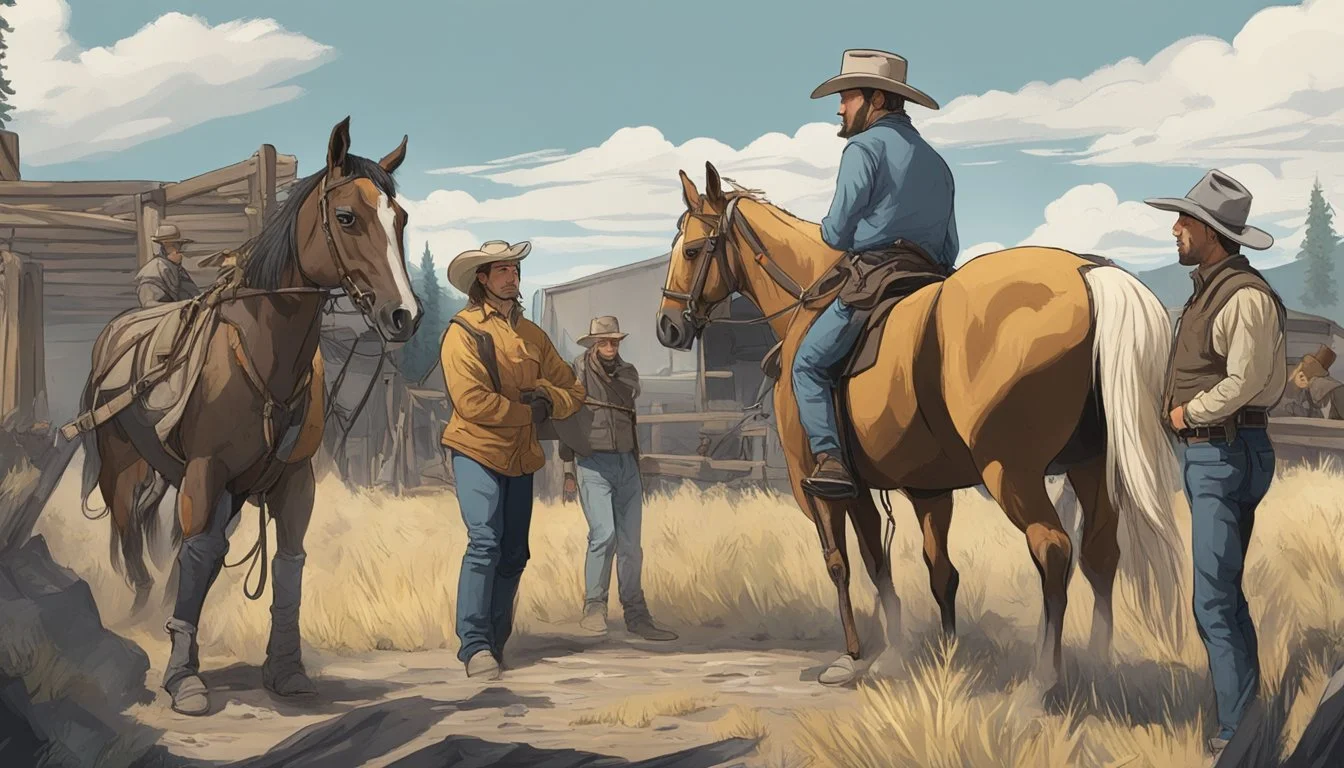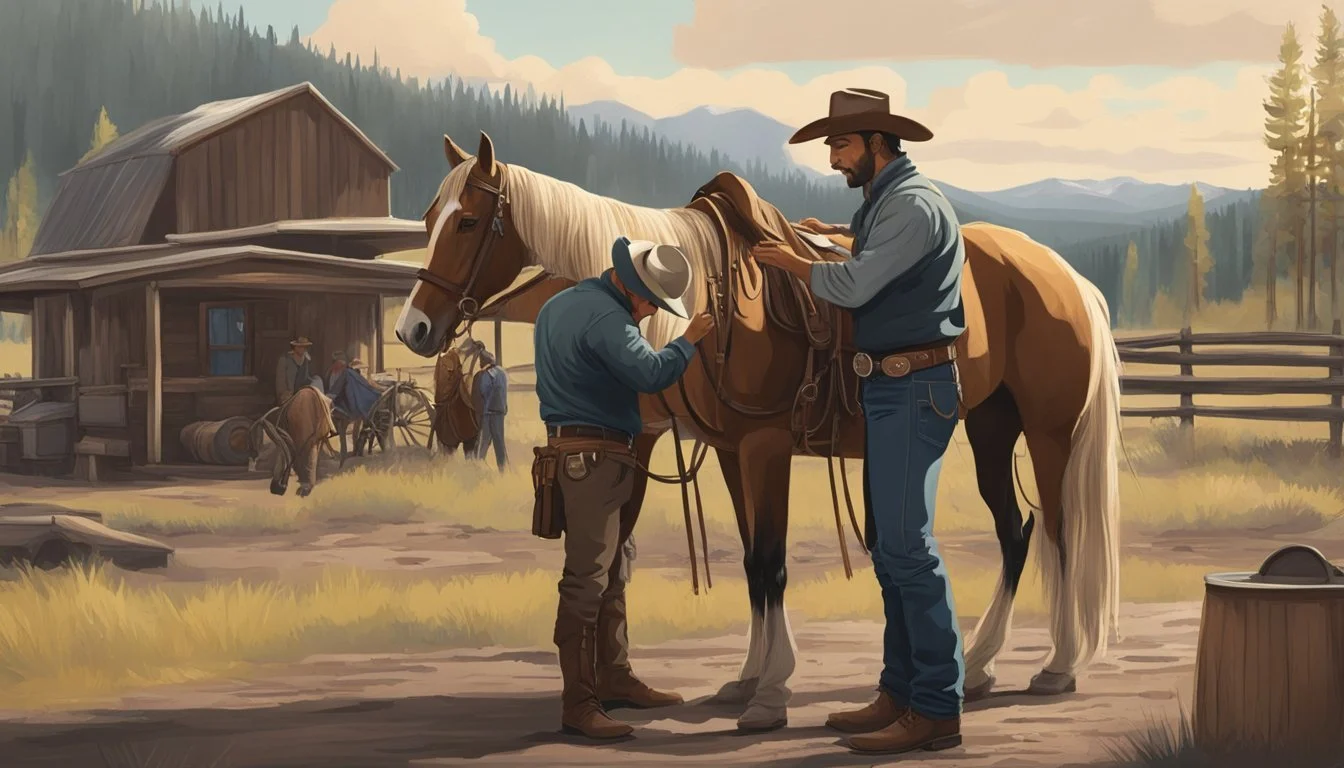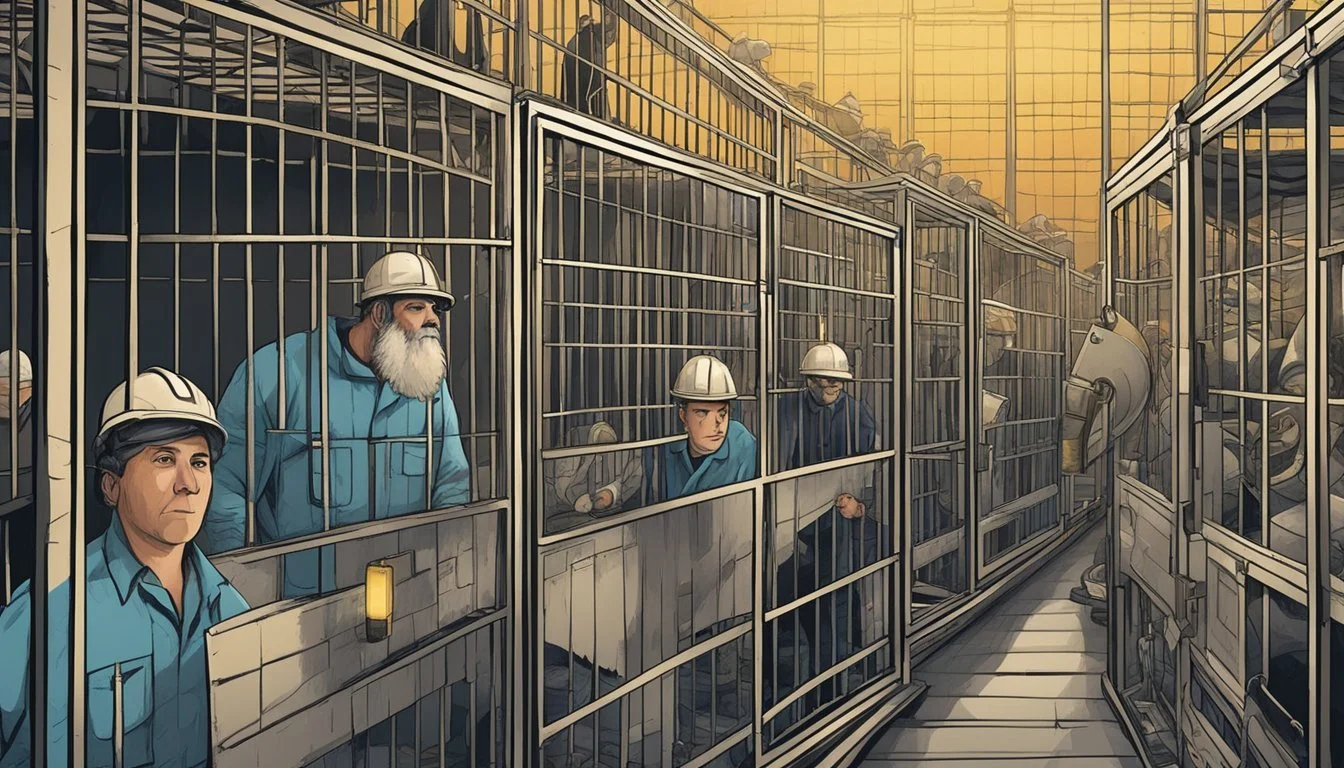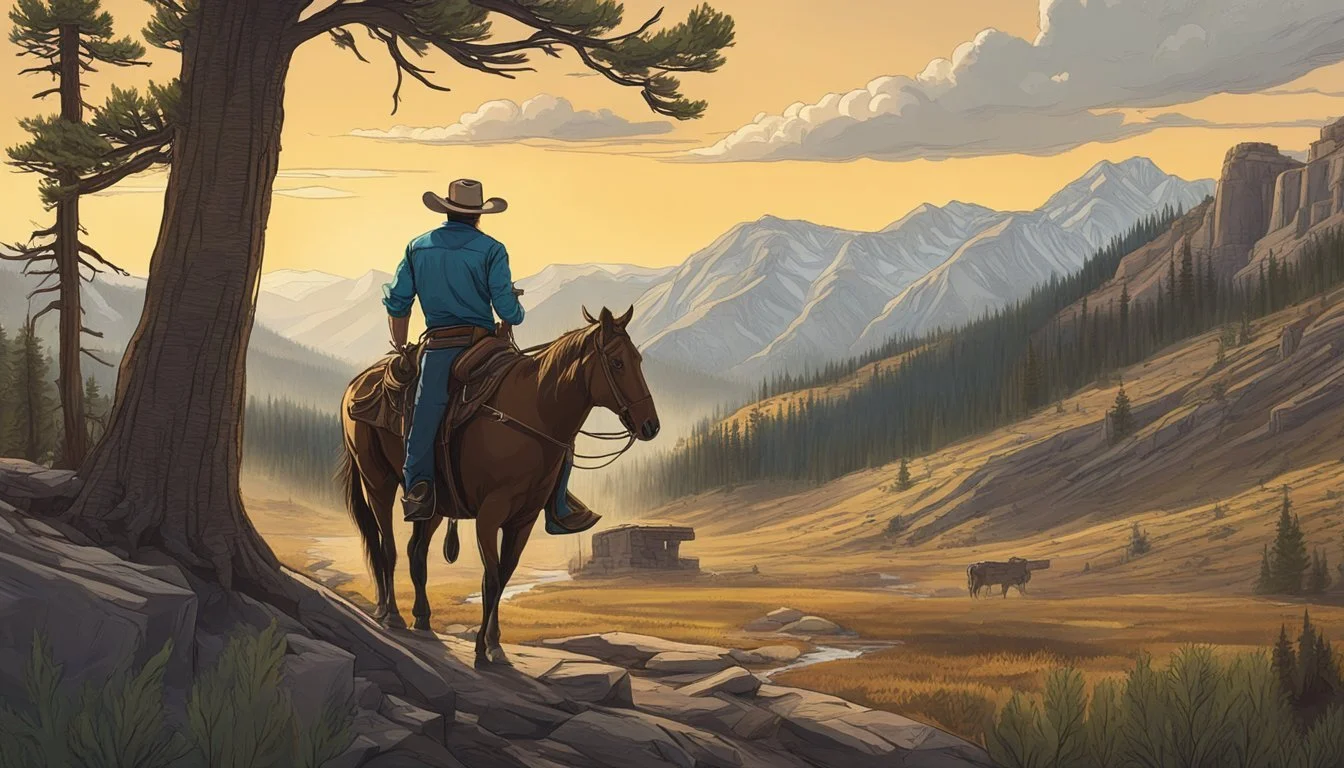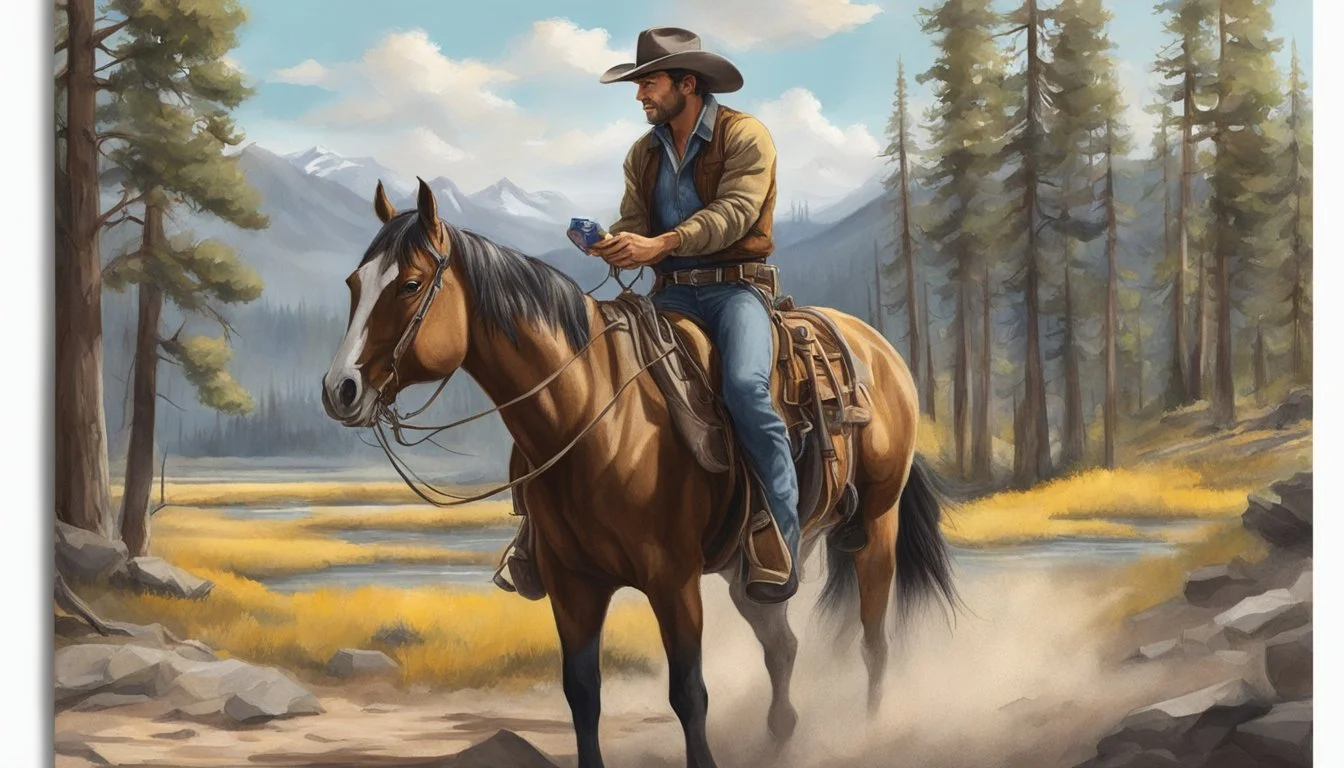Shocking Allegations of Animal Cruelty Rock the Yellowstone Show Production
The popular TV series "Yellowstone" has faced allegations of animal cruelty during its production. PETA released an exclusive video interview with a whistleblower who reported disturbing incidents on set, raising concerns about the treatment of animals during filming.
The show allegedly used real cow carcasses and possibly mutilated them for certain scenes, prompting outrage from animal rights activists. Paramount Network, the show's broadcaster, has denied these accusations, stating that the claims are unfounded.
The controversy surrounding "Yellowstone" has sparked discussions about ethical practices in the entertainment industry. Some viewers have expressed discomfort with the graphic depictions of animal-related scenes, questioning the necessity of such portrayals in storytelling. As the debate continues, it remains to be seen how the show's producers will address these concerns in future seasons.
Background of 'Yellowstone'
'Yellowstone' is a popular television drama that premiered in 2018 on the Paramount Network. The show centers on the Dutton family's struggles to maintain control of their vast ranch in Montana.
Premise and Significant Characters
'Yellowstone' follows the Dutton family, led by patriarch John Dutton, played by Kevin Costner. The Duttons own the largest contiguous ranch in the United States and face constant threats from land developers, the neighboring Broken Rock Indian Reservation, and other adversaries.
John Dutton's children play crucial roles in the series. Beth, Jamie, and Kayce Dutton each contribute to the family's efforts to protect their land and legacy.
Thomas Rainwater, the chief of the Broken Rock Reservation, serves as a formidable opponent to the Duttons. He seeks to reclaim the land for his people, adding complexity to the show's conflicts.
Creative Force Behind the Series
Taylor Sheridan is the creative mastermind behind 'Yellowstone'. He serves as the creator, writer, and director for many episodes. Sheridan's background in acting and writing for other successful projects has influenced the show's authentic Western feel.
Sheridan's unique storytelling approach blends classic Western themes with modern conflicts. His writing style emphasizes complex characters and moral ambiguity, creating a rich narrative landscape.
The show's production values are high, with stunning cinematography capturing Montana's breathtaking landscapes. This visual element contributes significantly to the series' appeal.
Paramount Network's Role
Paramount Network took a significant risk by green-lighting 'Yellowstone' as its first scripted series. The network's commitment to high-quality original programming has paid off, with the show becoming a cornerstone of its lineup.
'Yellowstone' has consistently delivered strong ratings for Paramount Network. Its success has led to the development of spin-off series and increased the network's profile in the competitive television landscape.
Paramount Network's marketing strategy for 'Yellowstone' has been crucial to its success. The network has leveraged Kevin Costner's star power and the show's compelling storylines to attract a wide audience.
Animal Cruelty Allegations in Entertainment
Animal welfare concerns have plagued the entertainment industry for decades. Accusations of mistreatment on film and television sets have led to increased scrutiny and calls for stricter oversight.
History of Cruelty Claims in Hollywood
Animal cruelty allegations in Hollywood date back to the early days of cinema. In the 1920s and 1930s, reports of animals being injured or killed during film production emerged. Notable incidents include horses being forced off cliffs for dramatic effect.
As public awareness grew, pressure mounted on studios to improve animal safety. The American Humane Association began monitoring film sets in 1940. Despite this oversight, controversies persisted.
High-profile cases in recent years have reignited debate. The HBO series "Luck" was canceled in 2012 after multiple horse deaths. In 2018, a whistleblower alleged animal mistreatment on the set of "Yellowstone," including claims of mutilated cow carcasses being used as props.
Regulations and Certifications
The "No Animals Were Harmed" certification, administered by American Humane, is the primary safeguard for animal welfare in U.S. productions. To receive this designation, films must follow strict guidelines and allow on-set monitoring.
Some critics argue these measures are insufficient. Alternative certifications like the "Certified Animal Safety" seal from PETA have emerged. These often impose stricter standards, such as banning the use of wild animals.
Legal protections vary by jurisdiction. The Animal Welfare Act provides some federal oversight, but many argue stronger laws are needed. Some productions now use CGI to avoid potential animal welfare issues entirely.
Public Perception and Backlash
Animal cruelty allegations can severely damage a production's reputation. Social media has amplified public outrage, leading to boycotts and negative publicity. The 2017 film "A Dog's Purpose" faced backlash after leaked footage appeared to show a distressed dog on set.
Consumers increasingly demand ethical treatment of animals in entertainment. Many viewers actively seek out productions with strong animal welfare credentials. This shift has prompted some studios to proactively highlight their animal safety measures.
Celebrity advocates have also raised awareness. Actors like Joaquin Phoenix have spoken out against animal exploitation in film. Their influence has helped push the industry towards more humane practices.
Specific Allegations Against 'Yellowstone'
The popular TV series 'Yellowstone' has faced serious accusations of animal cruelty on set. These claims have sparked controversy and raised concerns about animal welfare in film and television production.
Whistleblower Claims and PETA's Involvement
A whistleblower from the 'Yellowstone' crew reported disturbing incidents to PETA. This individual alleged that the production engaged in practices harmful to animals. PETA released an exclusive video interview with the whistleblower, shedding light on the situation.
The organization also launched a portal to make it easier for witnesses to report animal abuse in the entertainment industry. PETA urged the show's producers to use existing rodeo footage instead of recreating scenes with live animals.
Reported Incidents on Set
Specific allegations included the mutilation of a cow carcass for filming purposes. The whistleblower claimed that dead cows were used as props without proper regard for animal dignity.
There were also reports of unsafe practices during the filming of rodeo scenes. These incidents allegedly put animals at risk of injury or distress.
The production team was accused of ignoring PETA's requests for compassion. They reportedly banned cell phones on set during certain animal scenes, raising suspicions about transparency.
These allegations have led to increased scrutiny of animal safety protocols in the television industry.
Cruelty-Free Practices in Filmmaking
Ethical filmmaking prioritizes animal welfare through innovative techniques and alternatives. Productions are increasingly adopting methods that avoid harming or exploiting animals while still achieving desired visual effects.
Use of Props and CGI
Realistic props and computer-generated imagery (CGI) have revolutionized animal representation in film and television. Lifelike animatronic animals can be used for close-up shots, providing a humane alternative to live animals. These sophisticated props are crafted by skilled artists to mimic natural movements and expressions.
For wider shots or complex sequences, CGI allows filmmakers to create photorealistic animals without any risk to living creatures. Advanced motion capture technology enables digital animals to move naturally. CGI also offers flexibility in portraying dangerous situations or fantastical creatures that would be impossible or unethical with real animals.
Alternatives to Animal Use in TV Series
TV series are exploring creative solutions to reduce reliance on animal actors. Some productions use trained rescue animals for brief, low-stress scenes under close supervision. Others opt for clever camera angles and editing to imply animal presence without actually featuring them on set.
Stock footage libraries offer extensive collections of animal behavior, allowing shows to incorporate wildlife scenes ethically. Some series partner with sanctuaries or wildlife rehabilitation centers to film animals in their natural habitats, promoting conservation messages alongside entertainment.
Producers are also rewriting scripts to minimize or eliminate animal roles altogether, focusing instead on human-centric storylines. This shift not only ensures animal welfare but often leads to more nuanced and compelling narratives.
Industry Response and Safety Standards
Animal welfare on television and film sets has become a prominent concern. Production companies and animal rights organizations are working to establish and enforce improved protocols for animal treatment during filming.
Improving Animal Welfare on Sets
Paramount Network has implemented stricter animal safety guidelines for "Yellowstone" and other productions. These include having certified animal handlers present during filming and using computer-generated imagery when possible. Some studios now require third-party audits of animal care practices on set.
Training programs for crew members on proper animal handling have been developed. Production companies are also exploring alternatives to live animals, such as animatronics and digital effects, for potentially dangerous or stressful scenes.
Role of Animal Rights Organizations
PETA has been instrumental in raising awareness about alleged animal mistreatment on the "Yellowstone" set. The organization conducts investigations, releases public statements, and communicates directly with production companies to advocate for animal welfare.
Animal rights groups provide resources and expertise to help productions improve their practices. They push for transparency and accountability through initiatives like whistleblower hotlines. Some organizations offer on-set monitoring services to ensure compliance with animal safety standards.
These groups also lobby for stronger industry-wide regulations on animal use in entertainment. Their efforts have led to increased scrutiny of animal-related filming practices across the television and film industry.
Digital Privacy and Online Discussions
Online platforms facilitate discussions about animal treatment in media, but raise concerns about user privacy and protection. Digital safeguards are essential for those reporting potential abuse.
Online Debate on Animal Treatment
Reddit hosts vigorous debates on animal welfare in shows like Yellowstone. Users discuss scenes involving animals, sharing opinions on ethical treatment. Pseudonymous accounts allow frank conversations while maintaining some privacy. However, Reddit's user agreement permits content moderation, potentially impacting controversial posts.
Strong passwords and two-factor authentication boost account security. This protects users' identities when engaging in sensitive discussions. Using a unique username unconnected to real-world identities adds another layer of privacy.
Protecting Privacy While Reporting Abuse
Anonymous reporting channels are crucial for those exposing potential animal mistreatment. Secure, encrypted messaging platforms allow confidential communication with animal welfare groups. Whistleblowers can share information without fear of retaliation.
Digital privacy tools like VPNs mask users' IP addresses, adding protection when accessing reporting portals. Some organizations offer Tor-based submission systems for maximum anonymity. Properly securing devices and accounts helps safeguard sensitive evidence and correspondence.
Preventing Disease Transmission on Set
Proper handling of animal carcasses on film sets is crucial for preventing disease transmission. When working with dead animals, crew members should wear protective equipment like gloves, masks, and coveralls.
Rapid removal and disposal of carcasses is essential. Dead animals should be stored in sealed containers and refrigerated if not immediately disposed of. This prevents decomposition and limits exposure.
Thorough cleaning and disinfection of all surfaces that came into contact with animal remains is necessary. Strong disinfectants approved for use against pathogens should be used.
Limiting access to areas with animal carcasses can reduce potential exposure. Only crew members directly involved in handling the remains should be permitted in these spaces.
Proper training on biosecurity measures is important for all crew members working with animal remains. This includes instruction on:
Safe handling procedures
Proper use of protective equipment
Disinfection protocols
Symptoms of zoonotic diseases
Regular health monitoring of crew members who handle animal carcasses can help detect any disease transmission early. A system for reporting potential exposures or symptoms should be implemented.

